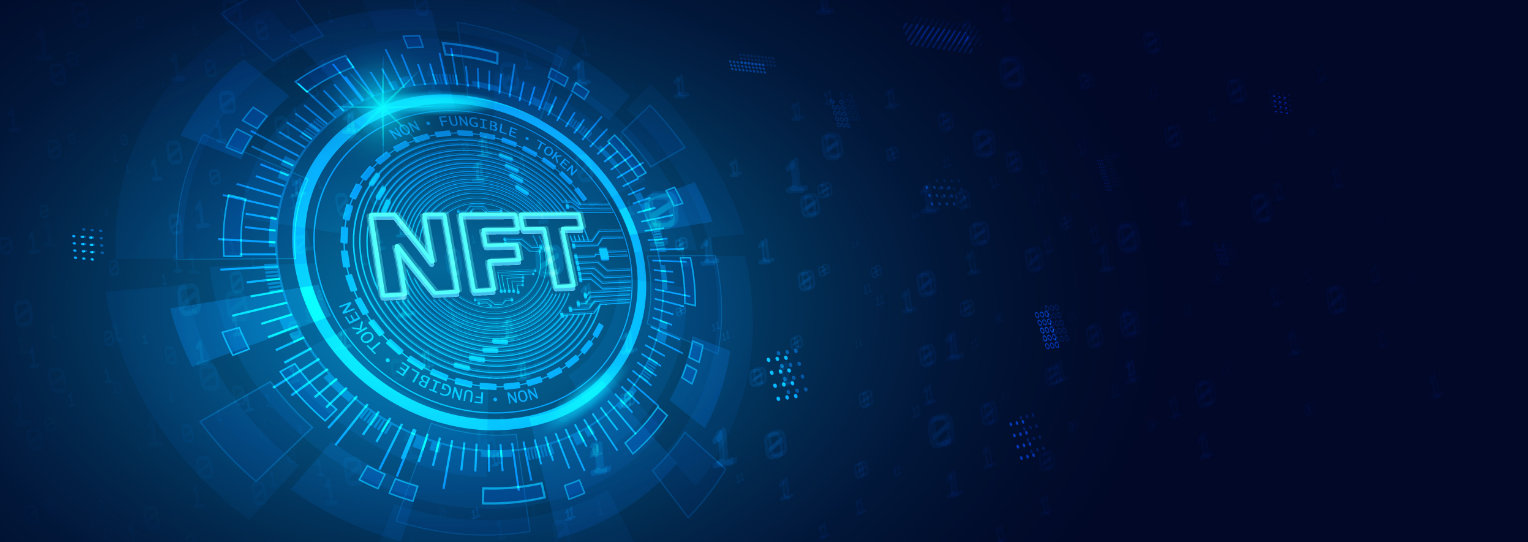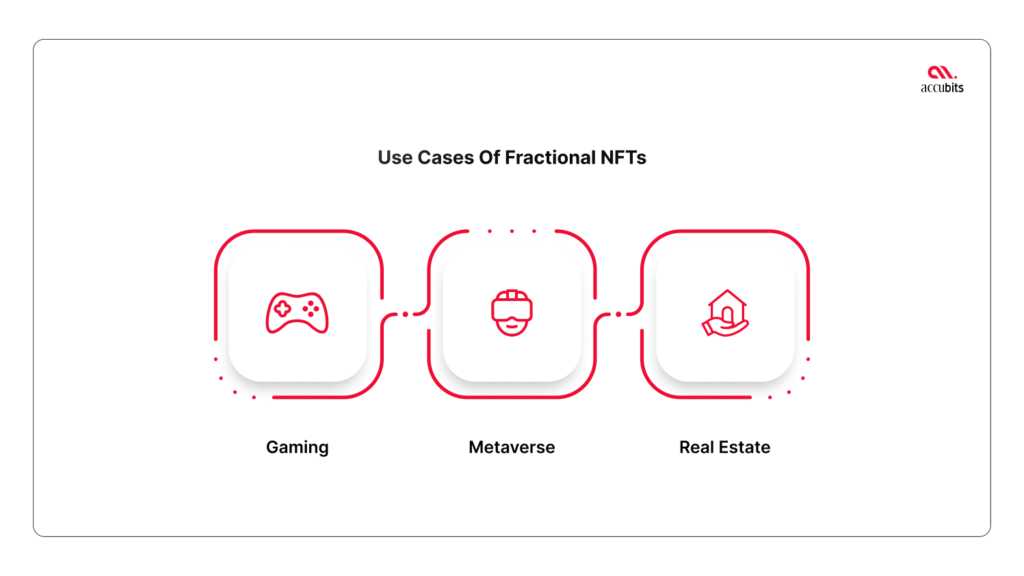
NFTs are storming into mainstream trading practices, and unlike crypto, the property of rarity is driving their demand more than ever. And the rarer an NFT is, the more pricey it becomes so that only a few can afford it. What if not just one person but a group of people can share the ownership of a valuable NFT? That is exactly what Fractional NFTs or F-NFTs are. It has the potential to change the future of NFTs for good.
- What are fractional NFTs?
- Use cases of fractional NFTs
- The benefits of fractionalizing NFTs
- What is the process of NFT fractionalization?
- Challenges of F-NFTs
What are Fractional NFTs?
Fractional NFTs are a group of fungible tokens that belong to a single NFT or a group of NFTs. The name fractional refers to the shared ownership of these NFTs. When an NFT is fractionalized, the parent NFT will be locked in a vault. Fungible versions of that NFT will be released in limited supply, representing partial ownership of the parent NFT. NFTs are commonly represented by ERC721, Ethereum-based tokens. Fractionalized NFTs in Ethereum are represented by ERC21, also referred to as F-NFTs.
People can buy, sell and mint fractionalized NFTs on platforms like fractional.art and Aqarchain. They can be traded on Uniswap and OpenSea, and similar marketplaces. As a slight variation, APE tokens from Yuga Labs created NFTs that do not share ownership but the token’s utility that can be redeemed inside the APE ecosystem. Users who buy BAYC NFT of the APE ecosystem get APE tokens for free.
Use cases of fractional NFTs

Gaming
Most games have in-game assets that can be purchased with crypto or NFTs. Multiplayer games enable groups of players to purchase in-game assets using fractionalized NFTs. One example is the crypto-based game Axie Infinity. Axie Infinity is testing use cases of F-NFT in gaming. It has already started rolling out the idea by allowing fractional ownership for ultra-rare creatures in the game called Axies.
Metaverse
Metaverse has become the supreme host for NFTs, and now F-NFTs have also found their way into it. As the metaverse enters the mainstream, people have already predicted its potential and started investing in projects. Decentraland and Sandbox particularly make headlines every day. Assets in the metaverse could become highly-priced based on the demand around them. With NFT fractions, investors can partially own virtual lands, buildings, and other elements up for sale.
Real estate
Real estate is one luxury asset that can be bought using NFTs. It could make way for a group of people to own a shared asset with F-NFT. Offline real estate has been following the shared ownership model, where more than one person owns the shares of property for decades. NFT fractions enable real-estate purchases without the involvement of an intermediary similar to NFTs.
For example, Propy is a company that has developed smart contracts for real estate while retaining the legalities of the US market. Through this, real estate can be bought and sold using cryptocurrencies, and the processes are bound to a smart contract without the requirement of an intermediary. Not just one, but multiple ownership with different people, and its payment can be done with one entity that is fractional NFT.
The benefits of fractionalizing NFTs
Price Discovery
NFT fractionalization can help produce a new price estimate for every ERC20 fraction. In turn, we can evaluate the overall value of the underlying ERC721, that is, the original NFT. When fractionalized NFTs are released into the market, the bidding rates can be used to price the parent NFTs. This helps to analyze the market demand and predict the price of NFTs.
Fractional NFTs and Liquidity
The core value of NFT is its rarity, but it also makes them illiquid. NFT fractionalization was created to address the illiquidity present in secondary NFT marketplaces. When an NFT is fractionalized, the ERC20 token representing the fractions can be traded more widely than NFTs. NFT fractions can be traded on DEXs or even on centralized exchanges. This will promote the liquidity of the ERC721, i.e., the original NFT.
Inclusive Participation
Fractionalized NFTs enable investors on the lower tiers to invest in NFTs that they otherwise cannot because of high prices. More participation promotes more popularity and makes way for mainstream usage of NFTs. This will democratize NFTs such that smaller investors can own a share of expensive collections of NFTs instead of it being hogged by the wealthy.
How are fractional NFTs created?
Simply put, when an NFT undergoes fractionalization, the asset-backed by it is first locked in a smart contract. The owner of the NFT can specify how the NFT should be fractionalized. The smart contract then splits the NFT into multiple fractions as fungible tokens. Each token will represent partial ownership of the original NFT. Users can now buy a share or a fraction of a valued digital asset-backed NFT. The fractional NFTs are initially out for sale at a fixed price for some time or until they sell out.
For example, on the Ethereum blockchain, the ERC-721 parent NFTs will be split into multiple ERC-20 tokens. Fractionalization is possible on networks such as Polygon, Solana, and Cardano.
Challenges of F-NFTs?
F-NFTs make highly valued and extremely rare NFTs affordable and guarantee a profit for the owner. But the problem surfaces when there is a need to get all the fractions of the NFT together. For example, if a pizza is sold in slices and three out of seven pieces have been sold, the owner can still use the remaining four for consumption or sale. In most cases, the whole stands independent of the fractions in terms of utility.
However, it is different for fractionalized NFTs. It is more convenient to trade NFT wholly than as fractions. The whole can be sold whenever, and its intended use-case can also be utilized whenever. But let’s say an in-game asset is sold in fractions, then one cannot use it for its use-case in the game unless they buy back all the fractions to make a whole. If the fractional owners refuse to sell back or if the private keys are lost, then there is no way to reconstitute the original NFT. Of course, this problem comes with a solution. Fractionalization protocols make the reconstitution of NFTs happen through buyout actions.
Out of all the buyout actions possible, the option of unlocking the parent NFT after getting back 100% of the fractional NFT supply is close to impossible. This is because not every F-NFT owner will be willing to sell it back, and the cost of acquiring the token also increases exponentially.
A possible buyout action is to get all the fractional NFT owners to vote to unlock the parent NFT. If the minimum count of votes set by the fractionalization protocol is achieved, the NFT can be unlocked. Token holders also have to stake the NFT fractions to cast their vote.
Closing thoughts
Fractionalized NFTs are a relatively new concept in the crypto world. The uniqueness of NFTs makes them extremely expensive, and the concept of fractionated NFTs act complementary to it. Fractionalization allows for the creation of fractional NFTs that can represent partial ownership of an asset. More than one investor can own a highly valued asset, an untouched concept in the digital asset sphere. This idea of democratic ownership can create a new system for trading valuable assets. In the future, NFT fractionalizing NFTs will help bring more users to the list of top NFT owners by making highly valued NFTs affordable.


